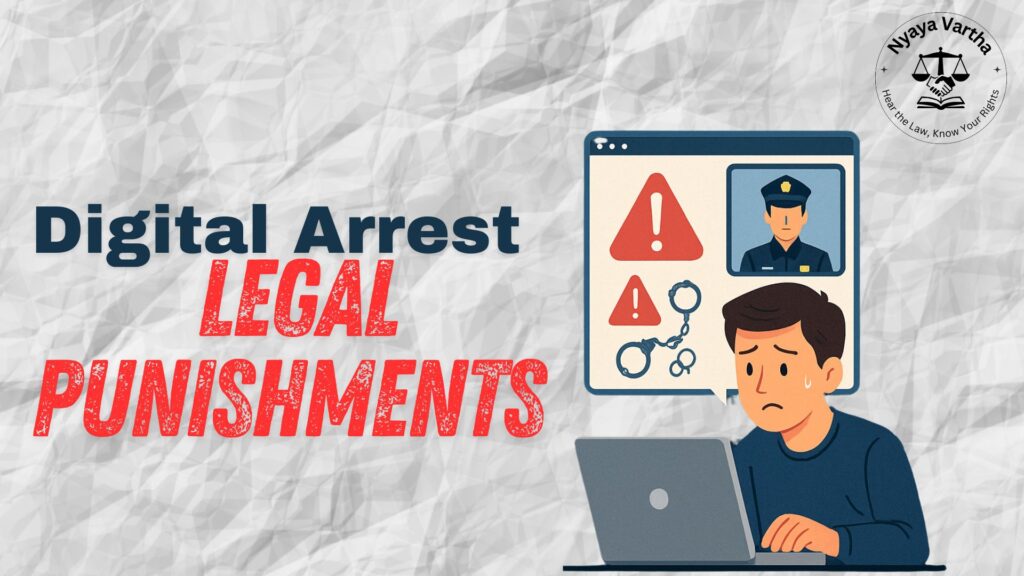“Digital arrest” is not a legal term, so there is no specific section in Indian law titled “punishment for digital arrest.” However, the criminal acts that constitute this scam are punishable under several sections of both the Bharatiya Nyay Sanhita (BNS), 2023 and the Information Technology (IT) Act, 2000.

Here are the most important sections under which the perpetrators of a “digital arrest” scam can be prosecuted and punished:
| Act & Section No. | Offence | Meaning & Application in “Digital Arrest” Scams | Punishment |
|---|---|---|---|
| Bharatiya Nyay Sanhita (BNS), 2023 | |||
| Section 318 | Cheating | Penalizes deceiving a person to dishonestly induce them to hand over property (i.e., money). This is the primary section for the financial fraud aspect of the scam. | Imprisonment up to 5 years, or with a fine, or both. For inducing delivery of property, it can be up to 7 years and a fine. |
| Section 319 | Cheating by Personation | Penalizes impersonating another person (e.g., a CBI officer, police official, or judge) to deceive someone. This is a core element of how the scam is executed. | Imprisonment up to 5 years, or with a fine, or both. |
| Section 308 | Extortion | Punishes putting a person in fear of injury (such as legal action or arrest) to dishonestly force them to deliver property. The threats of arrest are central to this section. | Imprisonment up to 7 years, or with a fine, or both. Can extend to 10 years if the threat is of death or grievous hurt. |
| Section 336 | Forgery | Used when criminals create fake documents or electronic records (e.g., forged arrest warrants, FIRs, or legal documents) to make their threats believable. | Imprisonment up to 2 years, or with a fine, or both. Forgery with the intent to cheat carries a punishment of up to 7 years and a fine. |
| Section 340 | Using a Forged Document as Genuine | Penalizes the act of using the forged documents created under Section 336, even if the person did not create them but knew they were fake. | Punished in the same manner as the forgery itself. |
| Section 111 | Organized Crime | This is a new, powerful section that includes cybercrime as a form of organized crime, allowing for stronger action against the criminal syndicates behind these scams. | Imprisonment for a term not less than 5 years but may extend to life imprisonment, along with a fine of not less than ₹5 lakh. |
| Information Technology (IT) Act, 2000 | |||
| Section 66C | Identity Theft | Penalizes the fraudulent use of another person’s unique identification features, such as their digital signature, password, or Aadhaar details. | Imprisonment up to 3 years and a fine up to ₹1 lakh. |
| Section 66D | Cheating by Personation by using Computer Resource | This is a specific section for “digital arrest” scams. It penalizes cheating by impersonation using a communication device or computer, which includes video calls, emails, and messaging apps. | Imprisonment up to 3 years and a fine up to ₹1 lakh. |
| Section 66 | Computer-related Offences | A broad section that can be used for any act done dishonestly or fraudulently with a computer system. | Imprisonment up to 3 years and/or a fine up to ₹5 lakh. |
